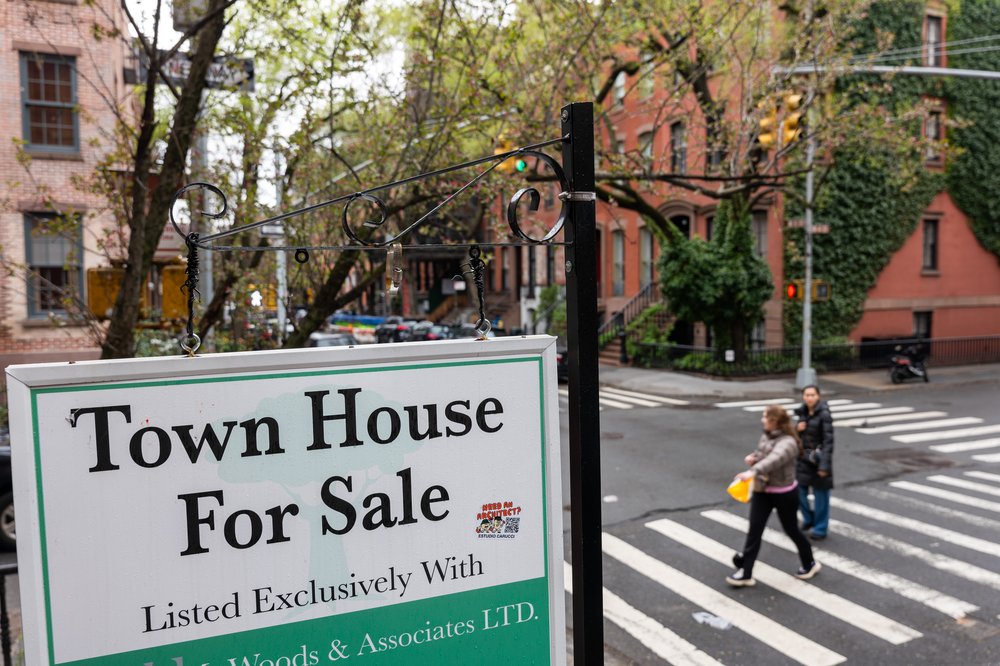How to buy a home in New York City (without being rich)
April 1, 2025, 2:01 p.m.
The outlook is grim but there are key steps would-be buyers can take, a new report finds.

Hoping to buy a home in the five boroughs?
Step one: be rich — or at least have family members who can bankroll a down payment.
It can be pretty grim out there for the vast majority of New Yorkers who can’t afford a median sale price that reached $785,000 last year, according to a new report from the Center for NYC Neighborhoods. But the organization, which convenes a network of other nonprofit homeowner support groups, is offering a guide to help make ownership a reality for more low- and middle-income buyers.
“There are definitely still options out there and being well-prepared to seize on them is one of the messages we want people to take away from this,” said Center for NYC Neighborhoods CEO and Executive Director Christie Peale.
That brings us to step two. The group’s report includes 11 tips for prospective purchasers, including how to find financial support and learn about different types of housing. It focuses on New Yorkers considered moderate- or low-income, like families of three earning between $70,000 and $170,000 a year.
The report lists an array of government and private down payment assistance programs for first-time homebuyers who meet certain income thresholds, like the city’s HomeFirst initiative or programs that cover closing costs offered by some major mortgage lenders, like Bank of America and Wells Fargo.
It advises would-be buyers to familiarize themselves with such programs and their requirements at the start of their housing search. And it recommends aspirational purchasers complete a homebuyer education class — a condition of several grants and assistance programs. The U.S. Department of Housing and Urban Development’s website features a tool to help find nearby counseling services. It lists 29 locations in and around New York City, most of them run by Center for NYC Neighborhoods partner organizations.
The report also recommends one other cost-saving strategy: checking to see if you or the property you want to buy qualify for a credit through the state’s School Tax Relief, or STAR, program, which reimburses homeowners for a portion of their property taxes. Other recommendations: get prequalified for a mortgage, read the terms of a condo or co-op’s financial disclosure packet, work with an agent, conduct a thorough home inspection and hire a real estate attorney before closing.
Peale said home-buying is key to the city’s overall housing market because tenants who make the transition into buying condos, co-ops or homes free up apartments in a city where two-thirds of residents rent.
“It’s a real benefit to communities if would-be homeowners aren’t competing on the rental market,” Peale said. “If there are people who can afford to buy, want to buy, that creates new rental opportunities.”
Center for NYC Neighborhoods Senior Program Manager Ariana Shirvani said the report drew on the experiences of 21 renters and owners who sat for in-depth interviews on their own housing searches.
“We wanted to make people feel like they’re not alone,” Shirvani said. “If you’re really frustrated and you’re hitting all these walls, that’s not in your head, there are barriers to entry and this is how people have succeeded.”
The report also captures people’s failed efforts and regret. One woman said she won a lottery for a unit in a Mitchell-Lama development, which limits sellers’ profits but keeps home prices at permanently affordable rates. She said she decided not to buy it at the time, in part because she wasn’t familiar with the housing model, but told the interviewers she later regretted her decision and wished she had known more about the program.
The report offers a summary of other affordable housing options in New York City, like the Housing Development Fund Corporation, or HDFC, cooperatives which are meant to offer homes to low-income owners through a model similar to the Mitchell-Lama program.
And it explains how other programs meant to spur affordable homeownership have stalled, like the city’s Open Door program. Since 2017, the initiative has financed just 10 projects comprising 451 units due to high construction and labor costs, the report found.
The authors recommend lawmakers spur the development of more affordable housing and unlock ownership opportunities, like forcing co-op boards to disclose why they reject an applicant, subsidizing more homes for low- and middle-income buyers and approving legislation called the “Tenant Opportunity to Purchase Act,” which would give residents the first chance to purchase their building if the landlord decides to sell.
Absent those measures, and a robust pipeline of new development, housing costs will continue to drive New Yorkers out of the city, Peale said.
“Home ownership is a means of stability and, especially in such a competitive market, it really helps people stay in communities,” she said. “It is an antidisplacement strategy in and of itself.”
Brooklyn's long-abandoned NYPD stationhouse will become affordable housing Where the sidewalk shed ends: NYC to pass ‘major’ scaffolding reforms Nearly 8K NYC households could lose rent aid as federal program runs out of money